NIGHT TERRORS – YEP SCARY!
My son wakes up screaming his head off at 10:40 p.m. I try to talk to him ask him what’s wrong. Nothing. I try to soothe him, rub his back. Nothing. This goes on for about 15 minutes. He’s screaming so loud and I’m terrified because I don’t know what to do. It finally stops. Luke lays back down and goes back to sleep. I’m fully awake however. It’s not a nightmare I’ve come to learn, it’s a NIGHT TERROR. And when he does have a nightmare, I’m actually relieved.
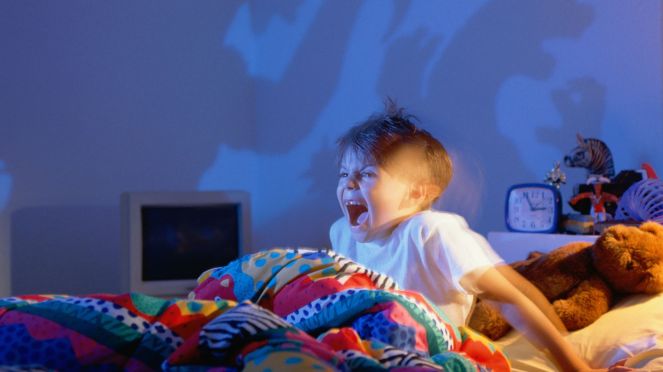
My son has had NIGHT TERRORS since he was 19 months. First time it happened, I thought he had a stomach-ache or something was hurting him. I went to pick him up from his crib at the time and his body went completely limp. His eyes were open, but no one seemed there. When I spoke to Luke’s pediatrician about this, she told me it was a NIGHT TERROR which is common and apparently perfectly normal in children ages 3 to 6 but it doesn’t seem normal at all. My son experienced them earlier in age and am told could happen until the age of 12. They are more common in boys than girls and no one seems to know why. About 1 to 6 in 100 children experience NIGHT TERRORS.
At first, I didn’t understand the difference between a nightmare and NIGHT TERROR.
When children wake up screaming from a sound sleep and tell you what happened in their dream, it’s a nightmare. When they suddenly stand up in their crib screaming at the top of their lungs with their eyes wide open but are still asleep and oblivious to your presence, it’s a NIGHT TERROR.
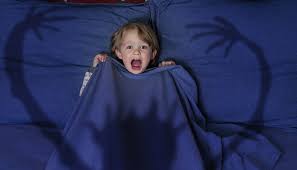
During a NIGHT TERROR episode, a child might:
- Sit up in bed
- Flail around in bed
- Scream
- Look awake but be confused
- Seem like they don’t know that a parent is there
- Not talk
- Not respond when a parent comforts them
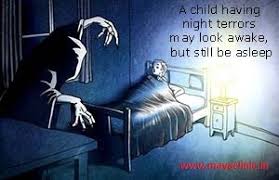
NIGHT TERROR usually happens within the first sleep cycle, that means within the first 2 hours after they have fallen asleep. With nightmares, you can usually reassure your child that Snow White wasn’t in any danger, but with NIGHT TERRORS, your child may think the Evil Queen keeps going after the princess, even though you’re right there in the bedroom doing everything you can to comfort them.
Can you prevent NIGHT TERRORS from happening? Not really but here are some thing that may lessen the episodes:
- no screen time right before bed
- don’t let them get too tired before bedtime
- read them positive soothing books
- try a weighted blanket (see my products page on weighted blankets)
- keep the same wake up time every day
So these NIGHT TERRORS are inevitable for some kids, here’s what to do and not do:
DON’T: wake them up, talk to them, turn on the light, bring them a comfort toy
DO: give them a hug or rub their back

The few times your child has a NIGHT TERROR, it will terrify you more but don’t worry, they won’t remember it the next day, unfortunately, you will.
*******************************************************************************
POTTY STRESS
Many child experts told me not to stress about potty training my son, but of course I did. How can you not. Seeing other kids who were younger than Luke and were fully potty trained made me anxious. Plus being a single mom on a budget, paying for diapers had taken its financial toll.
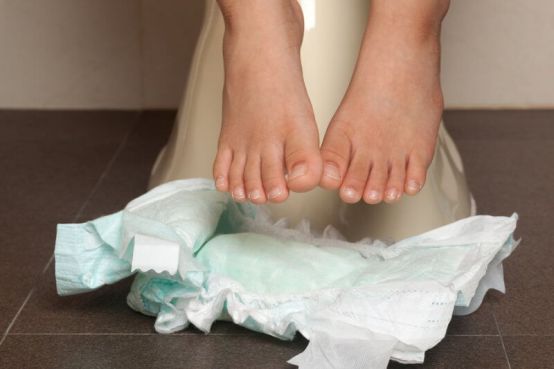
In sharing information with other parents, I came to learn that there are a lot of different ways you can potty train your toddler, but the most important thing to keep in mind is figuring out which is the best way for your child, from strict potty training to no potty training at all. Here are some methods I came to learn and try.
The 3-day stay in all weekend method
Many parents swear by this and have had success. You pick a weekend, put newspaper all over your carpets and get the timer out. Put your toddler on the potty every 30 minutes by using a timer and let them sit there until they go. This requires your child to be in underwear or nothing at all and hoping your floors don’t get too soiled. You have to be super be diligent about it but by the end of the weekend, you should have a fully potty trained child minus a few meltdowns. It’s sort of like cramming for that final exam that you haven’t studied for all year. I was not diligent about this so it did not work for Luke, he just wouldn’t sit on that potty, kept bouncing off so I gave up on this one.
The easy-does it method
This requires introducing your child to potty training in a slow and gradual method. It can start off as easy as just getting a potty and having your child get familiar with it and reading books about going potty. Then you slowly start encouraging your child to go while your child gets use to underwear or pull-ups. With Luke I would let him watch me go to the bathroom. I would also watch for the signs of when he was about to go like hiding in a corner or making that poop face, and I would ask him if he wants to go potty or to the bathroom. You do this enough times, it will happen. If your child goes to daycare or some kind of school, this is a tremendous help as they will see other kids doing it and will also want to. For Luke it was only #1 at first. Going #2, took about 6 months longer, this is pretty common especially for boys.
The whatever method
Many child psychologists and parents are starting to learn that no potty training can be the best way to get your toddler to potty train. No charts, no timer, no rewards, no timelines, just a lot of talking about it and diaper-free time. And then you just wait and wait. By the time they are three or three and a half, your toddler will be mature enough and have seen and heard enough to do it themselves. I came to this method out of sheer exhaustion and giving up. I actually told myself, he can be in diapers for the rest of his life and poof just like that, he started going #2 and going potty all the time.
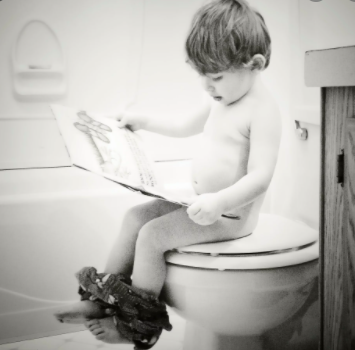
If I had the chance to do it all over again, I would have certainly been more lax about it. The one mistake I made was trying to force Luke to sit on the potty, he just wouldn’t have it. Kids do get to a point where they just don’t want to be in poop diapers anymore. I think as long as you are talking about and making even the smallest effort, they will get it. Rewards are great once they go or even make the effort but you also don’t want to go overboard with the rewards, keep it small and simple.
Expect your child to have accidents and regression but overall DON’T STRESS, YOUR KID WILL NOT BE IN DIAPERS FOREVER.
************************************************************************************
TAN-TRUM – an uncontrolled outburst of anger and frustration, typically in a young child (watch my son having a tantrum and what I did to calm him down)
Between the ages of 1 to 3, you can be sure and expect your child to throw tantrums. Okay so most parents know this but are we really prepared for them? I know I certainly wasn’t and was mortified when it happened in front of a good friend and her very calm child.
We are told by experts and doctors to just ignore it, giving in to them will only make things worse and will most likely result in a “spoiled” child as they get older. No one of course wants that. Usually a child will throw a tantrum with mommy or daddy only. My daycare tells me Luke is an angel at school and of course I’m happy but it would be great if he were an “angel” for me.
Being a single mom, I have such limited time with my son so the last thing I want to do is be the bad guy always saying “no” and setting limits but I’m learning that I just need to even though I really don’t want to.
So what causes a child to get so upset they throw themselves on the floor, flagging their arms hysterically crying? Here is what I found based on some research and my own personal experience:
- an emotion that a child can’t regulate e.g. anger if a child feels he/she deserves or wants something that is deliberately withheld.
- Anxiety over a situation like a new day care, environment or strange person coming into their space.
- Tiredness, this is of course a no brainer but usually not the cause by itself. So if you take away a cookie or toy at a time when you’re child is tired, this will inevitably cause a tantrum.
- Lack of control or independence. As toddlers begin to walk and assert themselves, if their freedom is curtailed, you can be sure a tantrum will occur.

Okay more importantly, how do we handle temper tantrums.
- Ignore them, sounds mean but you have to do it. My Pediatrician told me to put my son in his crib and close the door. I tried it and he did calm down. It wasn’t easy to do but it worked – see before and after video below.
- If you have to talk at all, don’t yell, speak softly and don’t say too much. If you remain calm, it will help your child to as well.
- Teach your child sign language early on; since tantrums are happening at a time when your child can’t put together words, this is a good way to figure out what is going on. You don’t have to be an expert, just a few common words like “more”, “water”, “eat”, may be all you need.
- Make sure they are fed and well rested. Again since your child can’t talk, offer a snack or a little break. I always ask at day care how much he ate and slept that day so I can be sure he’s not tired or hungry.
I also found in my research that there is no difference between boys and girls and which sex throws more tantrums.
The good news is as your child develops his/her language skills, the tantrums will subside, until then, we just have to do the best we can. When the tantrum is over, do offer your child a hug, you can never go wrong with a good hug:)
*************************************************************************************
SUCK SUCK AWAY
Your baby is crying, he is not hungry or tired. He has his mouth open and eyes shut. His fists are clenched. You’ve tried everything to soothe him but ultimately you know the oral gem that will work. You grab that binkie, insert and ahhhh silence.
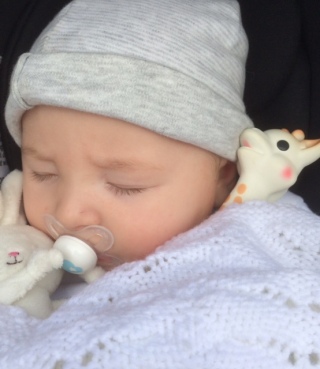
I was worried about starting my baby with pacifiers. I know some moms have banned them from the start and then don’t need to wean their little ones off of them. Being a single mom, I needed all the help I could get so having Luke with a pacifier was a no brainer.
I of course was worried my son would be hooked on it and guess what he is! But I do my best not to worry because when he is fussy and I’m ready to lose it, I grab that pacifier like most people grab a bottle of vicodin. But it got me thinking, how long will he be hooked on the “chooch” and when do I absolutely put my foot down on taking it away?
My pediatrician told me by age two, no more pacifiers. That gives me about a year to wean him off. I started out only giving Luke his pacifier when he sleeps or naps but when he started teething and started day care, he wanted it more and more. I try to distract him during the day and sometimes it works, but who know what happens at day care. And let’s face it, i can’t imagine how uncomfortable teething can be.
My sister raised her kids on no pacifiers but my nephew was addicted to his little “perrito” (that’s a small dog stuffed animal). He pretty much chewed the ear off.
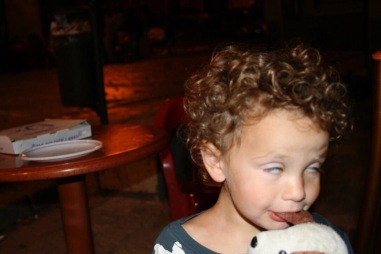
Another mom told me that she took her daughters pacifier away too soon and her daughter became a thumb sucker, and still has an oral fixation as a teenager – OH NO!
So how does one get a baby to stop sucking their thumb, stuffed animal or pacifier? I was a thumb sucker and my mom would put hot pepper on my thumb, sound mean but it worked.
A lot of moms told me they cut the pacifier and then just say to their little one, “it’s broken, see broken”. So okay but is having a pacifier that bad. Here are some pros and cons:
Pros – It’s for sure a big soother, babies instinctively need to suck to calm themselves and apparently it helps pre-mature babies gain weight faster. There are also studies that show that babies who use pacifiers have a reduced rate of SIDS.
Cons – Pacifiers were found to be responsible for more ear infections in kids under three. And of course over or extended use may result in your child needing braces. I had buck teeth and had to wear braces in high school – not pretty.
So this may not have solved your problem on if you should use a pacifier or not but while you’re considering it, here is a list of different names for it:
BINKIE, PACI, NUBBY, DUMMY, BOPPY, PLUG, BOBO, PAPPY, SUCKY, KIKI, SOOTHIE, BUTTON, FAKER, HUSHY, MO-MO, NUK, MUTE BUTTON, NA-NA
And the list goes on, if you have a name not mentioned, leave a comment.



![]()

*************************************************************************************
ROUTINE ROUTINE ROUTINE
Everyone thought I was crazy that I started to put my son on a schedule starting at 2 ½ months. But when you’re a single mom heading back to work, you know that this will save you some sleepless nights. In fact I think starting a routine early helped Luke, my son, to sleep through the night, starting at three month and just in time to go back to work.
Eating
At first I was feeding Luke on demand but I had come to the realization that every time he cried I would pop my breast out or stick a bottle in his mouth. This became quite literally insane for me. I spoke to my pediatrician who said try spacing out your feedings and feed him every 2 to 2 ½ hours. If your breast-feeding it will most likely be every 2 hours and if your giving your baby formula then every 2 ½ hours. I was doing both so it was a bit of a challenge to figure out the timing.
And it was an adjustment. I would say the first week was hard as Luke would of course start crying before 2 hours. He was a big eater from the moment he came into the world, he attached to my breast and started sucking away. But I did this gradually and I would extend the time by about 5 minutes so he would cry for about 5 minutes and then I would feed him. The next time it would go to 10 and before you know it, he was on an eating schedule.
Of course there would be times it wouldn’t work and I would never let Luke cry more than 5 minutes as you shouldn’t with newborns but this worked for me and now he is a great eater, eating every 3 ½ hours at 8 months.
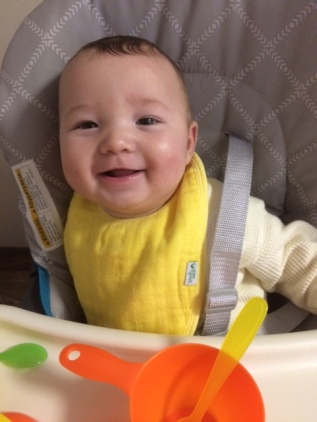
Sleeping
You probably have heard that early on you should not let your baby fall asleep in your arms. This was hard for me, as I’m sure with most new moms, I just loved holding my sweet boy. So I used the same technique as I did with eating. I would rock him less and less each time until he was able to go into his crib drowsy. Now at 8 months, he pretty much falls asleep on his own.
Having some kind of comfort when it’s nap or bed time also helps. So my routine was, when he started to get tired – usual cues are rubbing eyes, crying but different cry from hunger and of course yawing – I would take him to his room, give him his lovey and pacifier, rock him a little, put him in his wearable blanket, turn on the sound machine (white noise is best) and put him in his crib. Give him a kiss, tell him it’s nap time and then leave the room. He would maybe cry for a minute and then he would go to sleep. There were times he would just hang out and kick his legs or babble but eventually he would go to sleep on his own.
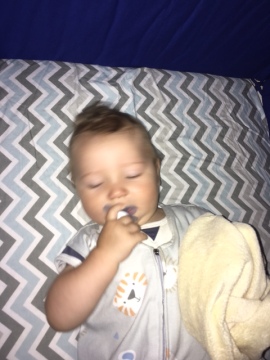
And when your baby starts to turn over or sleep on his side, he will be sleeping much better and longer.
Eating and Sleeping are always evolving processes so don’t be afraid to try new things and most important, listen to your baby and you’ll know what works best.